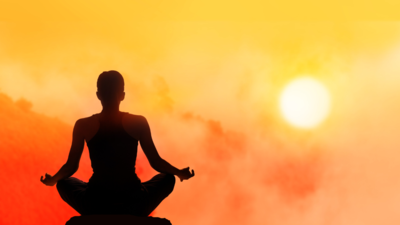ARTICLE AD BOX

In measuring our worth by activity and productivity, we often sacrifice the joys of 'being' to pressures of 'doing'. We seek fulfilment in motion rather than presence, so much so that stillness evokes discomfort and fear. We feel anxious to the point of questioning our purpose when we are not actively producing or consuming. This makes it critical to remember that our essence is not the same as our output. The Dalai Lama averred, "We are human beings, not human doings."The
upanishads
explain our true Atman, Self, as suddha-chaitanya, pure
consciousness
. "Atma va are drastavyah srotavyo mantavyo nididhyasitavyah," says the Brhadaranyaka Upanishad, suggesting the Self must be seen, heard, reflected and meditated upon. "Tat tvam asi," declares the Chandogya Upanishad. "You are That. Not your output. Not your roles. But That: undivided, luminous awareness. That is the finest essence - this world has that as its soul." The Isha Upanishad instructs, "In activity, you should desire to live a hundred years, but only if these activities are not binding."Our fundamental nature is not that of a doer, but of a witness, defined by the awareness informing our experiences. The Mandukya Upanishad speaks of turiya, the fourth state of consciousness, transcending waking, dreaming and deep sleep. "Not inward-knowing, not outward-knowing...not conscious, not unconscious," is the still, silent witness that is.Stillness is not about desisting from action but about ensuring that the constant flow of doing does not dictate our deepest identity. Yet, we are increasingly averse to it. With our growing tendency to fill even the briefest of lulls in our lives with digital distractions, it is remarkable how our present bears out philosopher Blaise Pascal's observation that "all of humanity's problems stem from man's inability to sit quietly in a room alone."
Stillness can dredge up emotions, fears, doubts and dilemmas bred by neglected, unprocessed questions of meaning, purpose and mortality. But resorting to 'busyness' as an escape hardly ever delivers the sustainable well-being we crave. As Christian mystic Meister Eckhart put it, "The soul does not grow by addition but by subtraction."This is where the Upanishadic definition of Self as consciousness comforts and liberates. Expanding our view of ourselves as witnesses enables us to place our activities in perspective without being consumed by them. The Bhagwad Gita counsels, "To action alone hast thou a right, but never to its fruits," paving the way for action and inner freedom to coexist; for us to be fully present and committed to our actions without tying our self-worth, peace and identity to whether things go the way we hoped.True
meditation
, contemplation teacher Adyashanti explains, is not about mastering a technique but about letting go of control; the most radical aspect of being is not a result of effort but surrender. Studies show that when we are focused on being aware without trying hard, the parts of our brain that usually think about 'self' are quieter, while the parts that make us feel present and peaceful, effortless awareness, become more active.This is the dimension of being that we should start reclaiming, not to shy away from our responsibilities, but to power them. "Muddy water is best cleared by leaving it alone," said philosopher Alan Watts.Authored by: Harsh Kabra
Why Arjun Was Chosen: The Untold Secret of Bhagavad Gita Chapter 4, Verse 3



.png)
.png)
.png)
















 2 days ago
9
2 days ago
9









 English (US) ·
English (US) ·